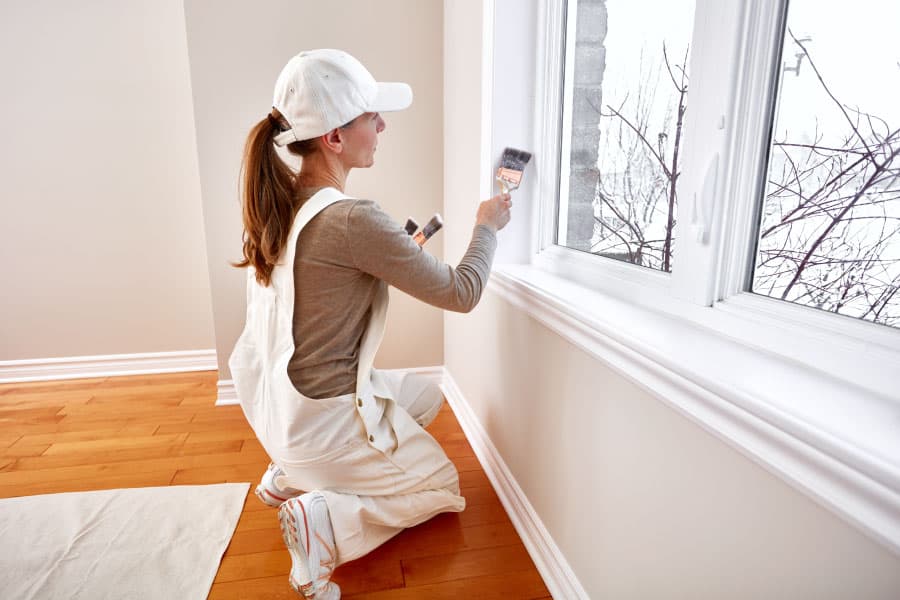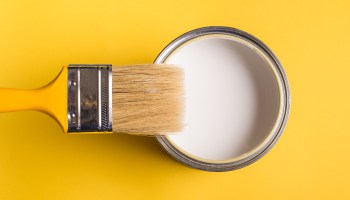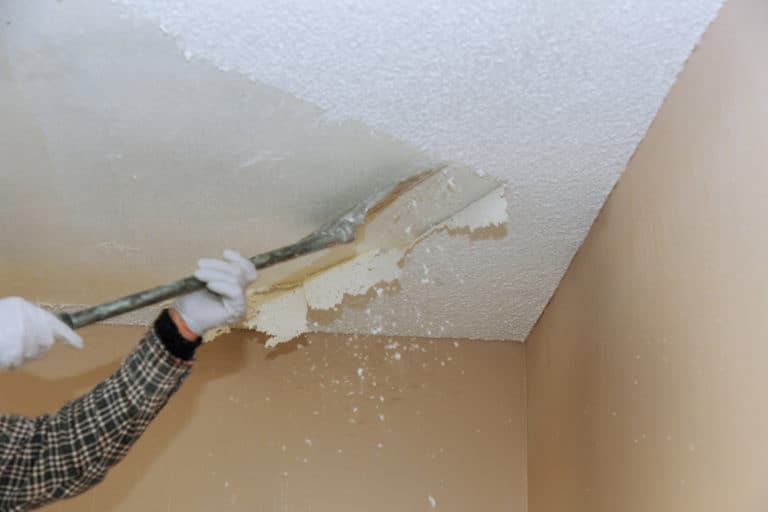Can You Use Ceiling Paint on Trim?
Not much thought is given to trim. It’s not exactly an eye-catcher, nor is it the highlight of any room. For comparison, do you know what the frame of the Mona Lisa looks like? Most likely, you don’t. If you think about it, though, the frame complements and helps set the painting’s aesthetic. The same thing can be said about trim for a room.
Ceiling paint is one of the most affordable types. It’s cheap, and it’s mixed in such a way that makes it easy to install.
So can you use the ceiling paint on the trim? You can apply ceiling paint on trim. Trim has no special requirement on how it can be finished, and ceiling paint can get the job done just as well as any other paint finish, albeit with a different result.
In this article, we’ll be getting into trim, ceiling paint, what to consider when combining these two, and a general introduction into the importance of paint.
That last bit may sound boring, but it’s far from it, and you will definitely learn something new and interesting from this article.
What is the trim?
Trim, in construction, refers to the interior/exterior finishes around a certain fixture as well as the finish of either the floor/ceiling.
Think of trim as the additional part to an existing object that beautifies it by either hiding a joint or by giving the object more character. Trim could also be used as a way of transitioning between finishes.
The type of trim you use is what gives the room it’s character.
For the simplicity of this article, we’ll be assuming the trim you are referring to is the trim on finishes and not on furniture.
What makes ceiling paint different?
A ceiling has usually only one fixture attached to it, and that would be a light or lights.
Ceilings are often one of the most challenging finishes to install correctly because they go directly against gravity. It’s not uncommon for the ceiling to have irregularities, gaps, etc.
Ceiling paint helps mitigate this by offering a flatter finish, meaning that the paint does not reflect the light. More viscosity is also needed to ensure that the ceiling paint does not drip as much and actually sticks to the ceiling.
More on ceiling paint on the trim
If you plan on using ceiling paint on trim, then expect that the trim finishes won’t be as prominent compared to if you used other paint finishes.
Of course, the trim will still be visible; however, during the night, when the house is light up by night, we tend to pay attention more to objects that reflect light subconsciously. It’s the reason why wooden floors are always polished with wax or why malls always have light focused on their merchandise.
In terms of maintenance, it will be harder to clean trim if you use ceiling paint. Ceiling paints are designed to hide imperfections and were never designed to be touched. Wall paints, on the other hand, are easier to clean; however, imperfections are much more pronounced.
It’s not the end of the world if you use ceiling paint on trim, but there are other ways to make light reflect on the trim. At the end of the day, it’s not that big a deal considering that ceiling paint is 25% cheaper compared to other interior paints.

How to paint a surface properly
Since the discussion of the article is regarding ceiling paint and trim, I’ll be assuming that you would want to learn how to do an interior painting job. Here’s what you need to know about painting interior spaces properly.
- Plan your approach. The suggested method of painting indoors would be to follow a certain order. The order recommended would be the trim, ceiling, and lastly, wall.
- Right tools for the right place and for the preferred technique. Self-explanatory, look into the different painting techniques and learn about which one might be best for you. Using the right tools, especially for the right place (whether that be trim, ceiling, or wall), is essential to ensure that the paint is put on correctly.
- Protect everything that you don’t want to paint. Most likely, in a room, there will be more areas that you don’t want to paint on compared to the area that you actually want to paint. Anything from plastics to tapes will work just fine, as long as paint doesn’t get to set on that object. No matter how good you are or how good you think you are at painting, the paint will always splatter around.
- Buy the right amount of paint. There are many online resources that provide ways that you can calculate the amount of paint you’d need for a project.
- Don’t rush the work. Rushing a paint job will most probably end up with you missing areas, applying paint where it’s not supposed to be, and just doing shoddy work in general. Take the time to paint the room properly, or else you’ll just end up spending more time, energy, and money.
- Don’t forget to clean up. Clean all the materials you’ve used for the project, as well as the protection for objects inside the room.
Using paint to your advantage
The right finishing and the right colors can have numerous noticeable advantages for either saving money, energy in maintenance, or just general better usage of space. Here are a few tips to ensure that you’re getting the most out of your paint.
- Learn when to use dark and when to use light.
- Light paint is used as a way to keep a room cold. It’s easy to identify any dirt, scratches, or marking on light paint. Light paint, in general, is better at reflecting light, which reduces the need for turn on the light at certain times of the day.
- Dark paint is used to absorb heat. It’s harder to identify any dirt, scratches, or marking on dark paint. Dark paint absorbs light instead of reflecting it, making a room literally a bit more “darker.”
* I’ve listed down the properties of light paint and dark paint; whichever applies best to your home and your situation should be the one you go with.
- Paint provides protection against the environment and as a sealant against moisture.
- A good paint job that compliments the house and gives it a solidified theme will increase the value of your house.
- Paint can be used as an indicator if something is wrong. For example, If the finish of the trim of your walls are bleeding onto the paint, it could be a sign that a pipe might have started to leak
Conclusion
Paint, if used smartly, can help improve the quality of life at home. Even if not by a significant margin, remember that painting is one of the cheapest renovation projects that a homeowner can undertake.
Trim is what helps set the room. It’s an accent that helps the room communicate to the users about the space.
Going back to the comparison mentioned in the article, think of trim as the frame except, in this case, the frame has a lot of utilities and practical uses.







